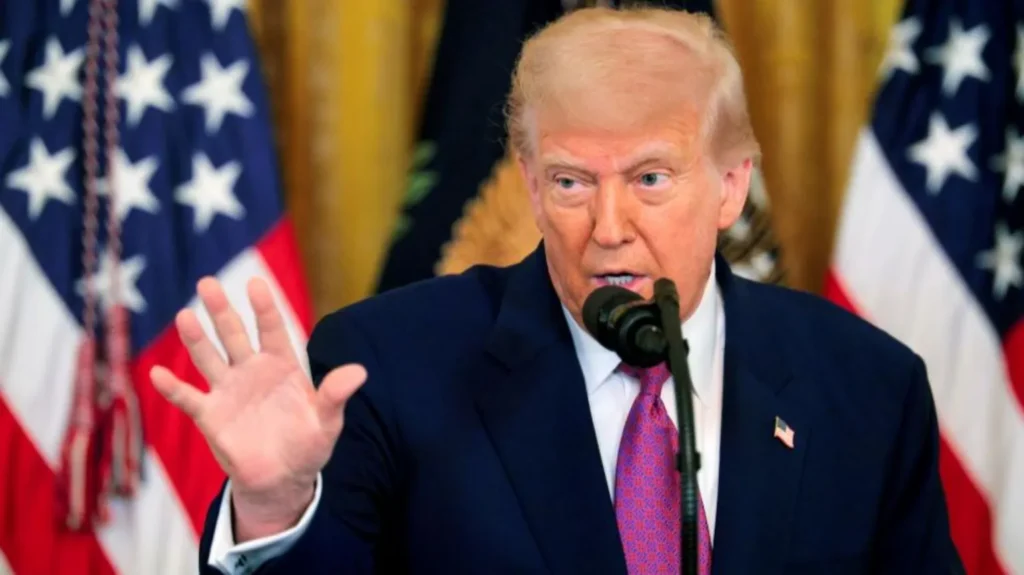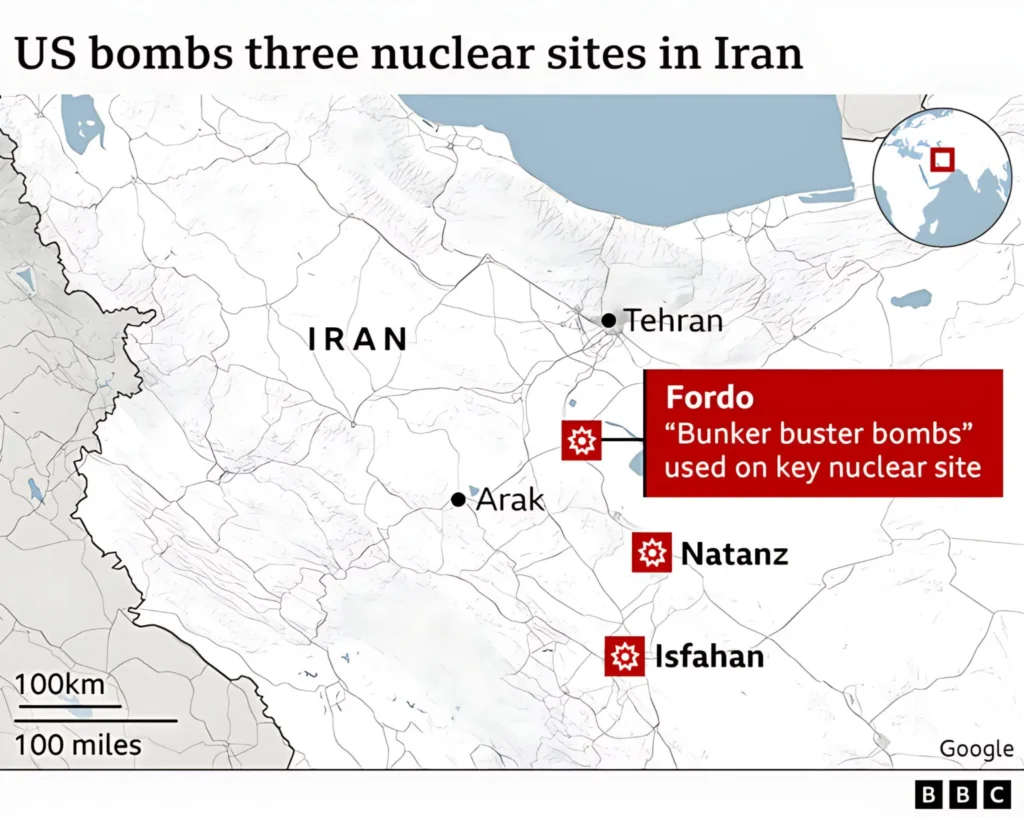
Donald Trump, who returned to the White House in January with a pledge to act as a “peacemaker,” has taken a bold and controversial step by thrusting the United States into the center of the escalating conflict between Iran and Israel.
Far from achieving peace in the Middle East, Trump is now leading an administration overseeing a region teetering on the brink of wider war—one in which the U.S. is now an active combatant.
In a televised address from the White House—just over two hours after announcing on social media that American forces had targeted three nuclear facilities in Iran—Trump declared the strikes a “spectacular success.” He expressed hope that the operation would pave the way for lasting peace by curbing Iran’s nuclear ambitions.
Iran, however, claimed that its heavily fortified Fordo nuclear site sustained only minor damage. Whether Trump’s confidence or Iran’s denial proves accurate remains to be seen.
Standing alongside Vice President JD Vance, Secretary of State Marco Rubio, and Defense Secretary Pete Hegseth, Trump warned Tehran that failure to abandon its nuclear program would lead to further U.S. attacks—”far worse and a lot easier,” he said. The president added that the U.S. still had “many targets left” and would strike with “speed, precision, and skill.”
Despite Trump’s confident tone, prolonged U.S. military engagement in Iran could become a worst-case scenario—not just for Washington, but for the entire region and beyond.
UN Secretary-General António Guterres cautioned against a “spiral of chaos,” noting that the Middle East was already deeply unstable. Iran’s Supreme Leader, Ayatollah Ali Khamenei, had previously warned of retaliation in the event of a U.S. strike—raising the risk of a dangerous cycle of escalation.
From Two Weeks to Two Days
Earlier this week, President Trump demanded Iran’s “unconditional surrender,” a hardline stance that made it difficult for him to back down. Iran responded with its own threats, putting both sides on a collision course.
This is how wars often begin—through escalating rhetoric that spirals beyond the control or intentions of those involved.
On Thursday, Trump gave Iran a two-week deadline. But by Saturday night—just two days later—he announced that he had taken action.
Was the two-week window ever genuine? Was it a strategic ploy to lull Iran into a false sense of security? Or did backchannel negotiations, possibly led by Trump’s appointed envoy Steve Witkoff, break down?

After the Strikes: Uncertainty and Risk
In the immediate aftermath of the strikes, much remains unclear. Still, in both his social media post and televised address, President Trump appeared to extend an olive branch, signaling an openness to peace.
That may be a hopeful interpretation. Despite Israel’s efforts to weaken Iran’s military infrastructure, the ayatollah still commands a significant arsenal.
Tensions could escalate quickly.
Now begins a tense waiting period: How will Iran respond to the attacks on three of its key sites, including Fordo, a facility considered the centerpiece of its nuclear program?
Trump seems to be betting that the U.S. strikes will pressure Iran into making concessions at the negotiating table. But it’s hard to imagine Tehran being more willing to engage in talks now—especially after being hit by both Israeli and American firepower.
Though Trump framed the U.S. strike as a one-time, decisive action, if it fails to deter Iran, pressure will mount for additional military responses. In that case, the president will have assumed significant political risk with potentially limited strategic payoff.
A ‘Peacemaker’ President on the Line
This risk isn’t just about global stability—it also carries domestic political consequences.
Even before the strike, the idea of U.S. military action in Iran had drawn sharp criticism, not only from Democrats but also from within Trump’s own “America First” movement.
His unusual decision to deliver the national address flanked by three close advisors may have been aimed at projecting party unity.
One of those advisors, Senator J.D. Vance, has been a vocal advocate for a restrained U.S. foreign policy. Recently, he had used social media to argue that Trump remains a non-interventionist and should be trusted by his base.
If the strike remains a limited engagement, Trump might succeed in holding his coalition together. But if the situation spirals into a broader conflict, he could face backlash even from within his own ranks.
Saturday’s strike was a bold move for a president who has often boasted about avoiding new wars and who campaigned last year by criticizing previous administrations for entangling the U.S. in foreign conflicts.
Trump has made his move. What happens next may no longer be entirely in his hands.


